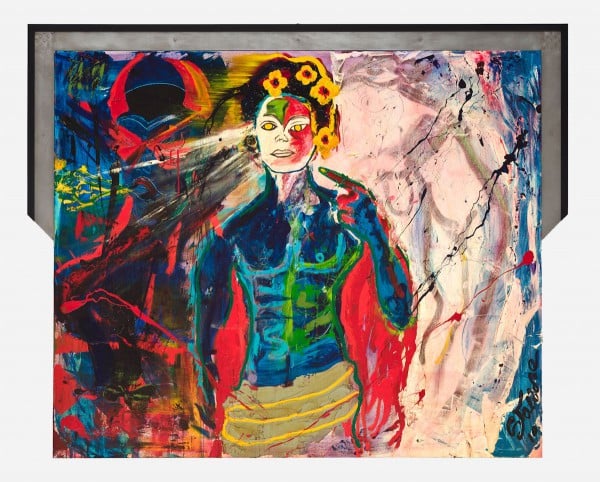Art & Exhibitions
Sylvester Stallone Retrospective Turns Heads (In a Good Way)


Adam Geczy

Sylvester Stallone: Paintngs 1975¬2013
Russian Museum, Ludwig Museum in the Russian Museum, Galerie Gmurzynska
Sylvester Stallone is an actor and director, but he is also an artist. A 40-year retrospective of his work opened in St. Petersburg this past fall and closed in January. The book accompanying the retrospective serves as a comprehensive reflection of the show for those unable to have ventured to Russia. I figured the book was worth a look, out of curiosity if not in deference to his fame.
As someone known for films involving violence and thrills, Sylvester Stallone would seem an unlikely candidate for making paintings. However one of the most prominent actor-directors in the history of film has had a long preoccupation and passion for art. Having studied at the university of Miami for a few years (he was later conferred a full degree in 1999 in lieu of his services to the arts), Stallone continued to make work, maintaining that it was one of the only activities that kept him sane and grounded. The book of his selected work, deriving from his retrospective at the Russian Museum in St. Petersburg, testifies to someone with seriousness and commitment.
The works, as Stallone freely admits, owe much to the work of Jean-Michel Basquiat, and to some extent Warhol. As one would expect, however, Stallone’s work is far more expressionistic, sometimes imbued with a frenetic charge that leads one to think of the violent explosions of the Viennese actionists of the 1970s and later the transavantgardists such as Baselitz and Sandro Chia.
Some works deal directly from his film roles such as the young Rocky Balboa, in which Stallone juxtaposes mediated photography with painting; other earlier work reveals a curious affinity with metaphysical painting such as that by de Chirico (Death of a Friend, 1977), but in all cases it is clear that these are ways of privately processing events in an antagonistic and impersonalizing outside world.
If the quality of the work is sometimes erratic, this can be an understandable symptom of working in private and being relatively insulated from comparison and critical comment. On the other hand, at best, Stallone’s painting shows an explosive creative temperament, a willingness to experiment with color and composition and a desire to experiment with the collision of different, even conflicting, visual syntax. Some of the best works are those in which all descriptive content is all but sacrificed for abstraction, as Stallone proves that he is adept in melding a variety of painterly passages to convey the fundamental sensory tensions that make us material beings and which we share with animals (Pleasure or Pain, 1989).
As a corpus, this is an imposing body of work, with many of the works of equally imposing dimensions, many exceeding six feet in height. In line with the old adage that an as an athlete fades, an artist grows, Stallone’s best work is in later years. One work, Symbiosis (2009), is of a dark, yet pulsatingly luminous dark field cleft in two by a menacing blood-red tear down the center. On one hand, it can be read as a later homage to Abstract Expressionism, but it may also be understood as an artist attempting to communicate fundamental truths about the secrets of nature and the limits of our rational understanding.
It would perhaps be misplaced to detail the various weaknesses of what is a formidable suite of work, rather to recognize that these works are the product of an ongoing immersion in painting. In this handsomely illustrated, impeccably presented book, we have a document that is as eye-opening as it is unusual. Here Stallone confesses to having a love of art exceeding that of making movies.
One can only imagine what kind of man he would have become if he had pursued art alone.